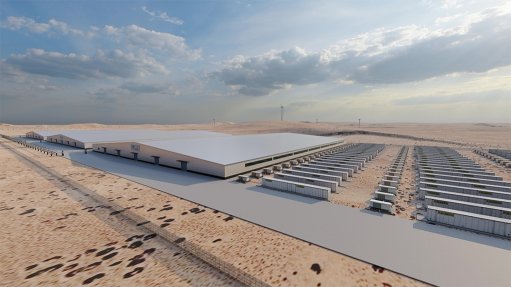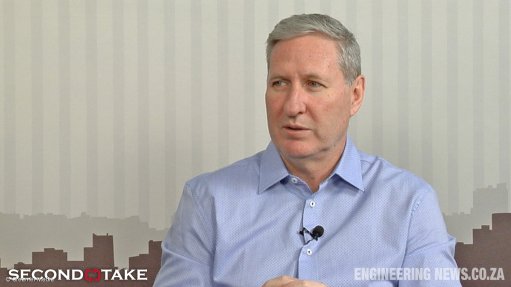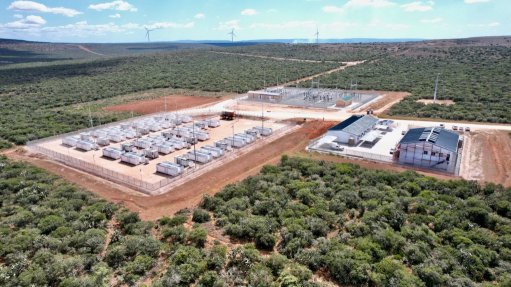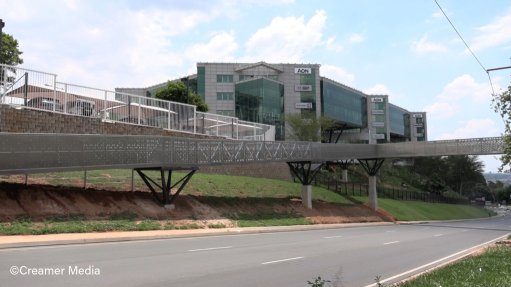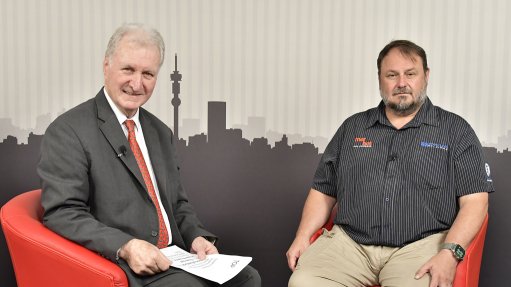AMEU publishes position paper on SSEG; Outa raises questions
The rapid growth of the small-scale embedded generation (SSEG) market in South Africa has introduced complexities in safety compliance requirements, leading to potential confusion among stakeholders, including developers, installers, municipalities and end-users.
Recognising these emerging challenges, the Association of Municipal Electricity Utilities (AMEU) has determined that it is essential for the organisation to also formulate a clear and robust position regarding safety compliance for low-voltage (LV) SSEG installations of up to 1 MVA, it indicates in a position paper on the subject.
To arrive at a comprehensive and informed position, the AMEU says it engaged with highly credible and respected subject matter experts and professionals within the SSEG field.
However, the Organisation Undoing Tax Abuse (Outa) says that, after reviewing the paper, it had found it to contain several incorrect interpretations of legislation and that it introduces requirements that fall outside the scope of municipal authority.
“The AMEU claims that its paper is based on credible consultation with subject matter experts. Yet it provides no list of contributors and no indication that the recognised technical committees legally responsible for developing electrical safety regulations and standards were consulted,” Outa avers.
The AMEU’s position paper seeks to outline the responsibilities of the municipality concerning compliance as per the Occupational Health and Safety (OHS) Act and associated regulations, with a focus on electrical safety.
It emphasises the necessity of adhering to established standards to mitigate risks associated with electrical installations.
One of the regulations stipulate that all electrical installations must conform to recognised health and safety standards. The responsibility falls on the municipality to ensure that no authorisations are given for installations that do not meet these standards.
The applicable standards include South African National Standard (SANS) 10142-1 for 230 V/400 V alternating current (ac) supplies and SANS 10142-2 for up to 3 MVA. These standards are exceptions that grant certification power to a “registered person”.
Moreover, other standards for medium- and high-voltage installations must also be considered and certified by competent persons.
One of the regulations indicate that installations must adhere to strict safety standards. The municipality (licensed electricity distributor) must not authorise any installations that do not conform to these standards. This includes both ac and direct current (dc) wiring, which must be treated separately from the commissioning of inverters, the position paper outlines.
The municipality must ensure that it does not assume legal responsibility for compliance; rather, it should assist the SSEG installation owner in proving compliance before connection can occur.
Another regulation mandates that a valid certificate of compliance (CoC), accompanied by an approved test report, is required for all electrical installations. The absence of such documentation generates considerable risk and liability.
However, a CoC is not the sole requirement. It must be accompanied by appropriate documentation that verifies compliance, which currently lacks a standardised test report for SSEG installations, the position paper indicates.
Per another regulation, only registered persons are authorised to issue a CoC, contingent upon thorough inspection and testing.
This applies to installations below 1 000 V for ac and 1 500 V for dc connections at the point of supply. Registered persons are accountable for verifying compliance per relevant standards.
The position paper emphasises that the issue of competency is paramount.
As outlined in another regulation, individuals seeking registration must demonstrate adequate knowledge of applicable regulations.
Currently, no registered person can sign a CoC for SSEG installations as SANS 10142-1 does not encompass these requirements. An alternative route will need to be established until appropriate standards are developed.
The position paper points out that a significant aspect of safety in SSEG installations involves understanding embedded generation, which refers to systems generating power in parallel with the electricity grid.
The lack of established standards inclusive of inverters, particularly in SANS 10142-1, heightens the complexity of ensuring safe installations, it notes.
Outa also mentions that the position paper “misstates” the registration requirements in the Electricity Regulation Act (ERA) by claiming that all systems under 100 kVA must register with the relevant licensed electricity distributor.
“The ERA makes it clear: the Act does not cover SSEG systems up to 100 kVA; offgrid and standby SSEG systems are exempt from registration; SSEG systems up to 100 kVA that do not export electricity into the network are exempt from registration; and SSEG systems above 100 kVA require registration with Nersa (the regulator).
"Municipalities cannot convert exempt SSEG systems into registrable ones, and municipalities may not invent new processes as policies under the guise of safety,” Outa states.
The position paper says that the National Rationalised Specifications (NRS) 097-2 Series – SSEG Specifications should also be recognised, as it is pertinent to safety considerations in these LV SSEG installations.
It also mentions that municipalities must ensure overall system safety by incorporating additional necessary requirements for SSEG installations.
However, Outa counters that NRS 097 are not compulsory safety standards.
“NRS documents are utility specifications. They are not incorporated into national legislation and cannot be enforced on the public. They also cannot be used to impose additional municipal requirements, especially not on residential SSEG systems that do not export electricity into the network,” Outa stresses.
In addition to the test report completed by a registered person, it is essential that SSEG installations also comply with power quality requirements and the Renewable Power Plant Grid Code provisions applicable to Category A, the position paper says.
Moreover, Outa disagrees with the AMEU’s claim that the withdrawal of SANS 10142-1-2 has created a gap in the standards governing SSEG installations.
It says that South Africa has already adopted IEC 60364-7-712 as the applicable generation-plant standard by direct normative reference within SANS 10142-1; and that SANS 10142-1 contains clear requirements that address dc, or solar PV installations and inverter integration.
“There is no vacuum in the regulatory framework, and certainly no need for municipalities to introduce interim engineering sign-offs or parallel safety systems,” Outa asserts.
All AMEU municipal electricity utilities members as individual independent organs of State still have the prerogative and choice of each coming up (if they choose to do so) with their respective own positions regarding safety compliance for low voltage SSEG installation up to 1 MVA, the organisation points out.
The AMEU’s position paper emphasises that the compliance of SSEG LV installations up to 1 MVA with the safety standards is crucial in protecting the safety of the public and electricity utility personnel and maintaining the integrity of the electrical infrastructure.
“The municipality's proactive approach to enforcing these regulations and enhancing the competency requirements for electricians will play a vital role in effectively mitigating risks associated with electrical installations. Robust compliance protocols will foster a safer environment for both municipal staff, customers, electrical workers, and the public,” the organisation says.
Its recommendations include mandatory training, development and testing; standardised testing reports; strengthened enforcement; and public awareness.
Outa also references the AMEU’s paper indicating that municipalities may require additional approval processes or “separate inverter commissioning documents” beyond CoC.
According to the organisation, this contradicts the Electrical Installation Regulations of the Occupational Health and Safety Act, which give registered persons the sole authority to inspect, test and certify electrical installations.
“A valid CoC confirms legal safety compliance for the entire electrical installation. Municipalities are not enforcement authorities under the Act and may not replace or override the Registered Person’s certification.
“Refusing connection or effecting disconnection on safety grounds where a valid CoC exists would be a direct violation of the regulations and an unlawful interference in the statutory duties of a registered person,” Outa avers.
Article Enquiry
Email Article
Save Article
Feedback
To advertise email advertising@creamermedia.co.za or click here
Comments
Announcements
What's On
Subscribe to improve your user experience...
Option 1 (equivalent of R125 a month):
Receive a weekly copy of Creamer Media's Engineering News & Mining Weekly magazine
(print copy for those in South Africa and e-magazine for those outside of South Africa)
Receive daily email newsletters
Access to full search results
Access archive of magazine back copies
Access to Projects in Progress
Access to ONE Research Report of your choice in PDF format
Option 2 (equivalent of R375 a month):
All benefits from Option 1
PLUS
Access to Creamer Media's Research Channel Africa for ALL Research Reports, in PDF format, on various industrial and mining sectors
including Electricity; Water; Energy Transition; Hydrogen; Roads, Rail and Ports; Coal; Gold; Platinum; Battery Metals; etc.
Already a subscriber?
Forgotten your password?
Receive weekly copy of Creamer Media's Engineering News & Mining Weekly magazine (print copy for those in South Africa and e-magazine for those outside of South Africa)
➕
Recieve daily email newsletters
➕
Access to full search results
➕
Access archive of magazine back copies
➕
Access to Projects in Progress
➕
Access to ONE Research Report of your choice in PDF format
RESEARCH CHANNEL AFRICA
R4500 (equivalent of R375 a month)
SUBSCRIBEAll benefits from Option 1
➕
Access to Creamer Media's Research Channel Africa for ALL Research Reports on various industrial and mining sectors, in PDF format, including on:
Electricity
➕
Water
➕
Energy Transition
➕
Hydrogen
➕
Roads, Rail and Ports
➕
Coal
➕
Gold
➕
Platinum
➕
Battery Metals
➕
etc.
Receive all benefits from Option 1 or Option 2 delivered to numerous people at your company
➕
Multiple User names and Passwords for simultaneous log-ins
➕
Intranet integration access to all in your organisation






